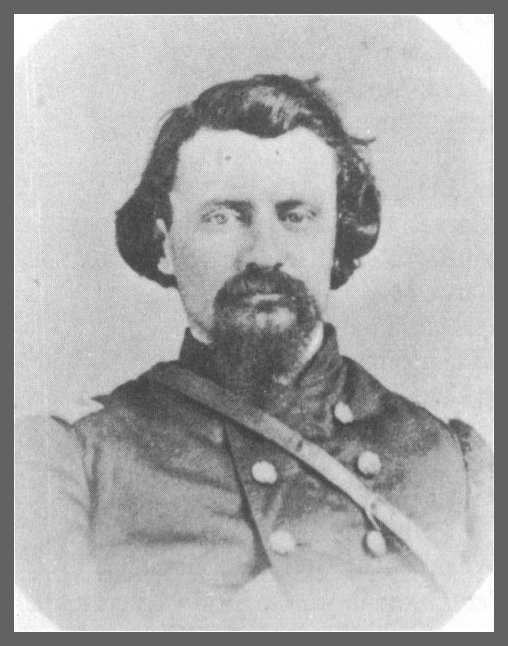 |
| Monroe's Bayonet Charge Wins The Battle |
| The battle’s turning point came when Garfield ordered Lt. Colonel George W. Monroe and a detachment of the 22nd Kentucky to charge up the steep ridge opposite Graveyard Point and drive the Confederate sharpshooters back to their main line. Monroe was a born fighter, and his heroic charge decided the battle’s outcome. While Moore’s Virginians were contesting Pardee’s advance, several companies of the 5th Kentucky moved down the spur opposite Graveyard Point towards Garfield’s main position. The Kentuckians raked Graveyard Point with heavy rifle fire until a sharp volley from Garfield’s reserves drove them back. While the battle was in progress, Cranor’s 40th Ohio arrived at Graveyard Point. Selecting 150 men from his Ohio regiments and the 22nd Kentucky, Garfield ordered Cranor to lead them across the creek and reinforce Pardee. Then he selected 120 Kentuckians, assigned them to Monroe, and ordered him to drive the rebel sharpshooters from the ridge opposite Graveyard Point. It was Kentuckian against Kentuckian as Monroe and his men fought their way up and along the narrow ridge towards the crest. Following Monroe's example, the men of the 22nd Kentucky fought Indian-style, moving from tree to tree. "Every man to a tree" shouted their commander. Ahead of them, posted behind a huge boulder, a large detachment of the 5th Kentucky stubbornly contested their assault. Monroe ordered his men to make a bayonet charge, and with loud yells they sprang up the hill and over the rocks. Three Union soldiers leaped upon the boulder as the Confederates fell back toward their main line. A flurry of parting shots brought down two of the trio, including Private Nelson Boggs of the 14th Kentucky, who fell dead with a ball through his brain. Though the Confederates stubbornly resisted the assault, the steady pressure from Union rifles slowly forced them to withdraw. The fighting ceased around 5 p.m., following Marshall’s order that the position be abandoned. |
 |
| Lt. Col. George W. Monroe of the 22nd Kentucky. Courtesy of Roger D. Hunt and Jack R. Brown, Brevet Brigadier Generals in Blue (Olde Soldier Books, Inc., 1990). |
| Private John Porter (right) and friend, 40th Ohio Infantry. Courtesy of the L. M. Strayer Collection, Ohio Historical Society. |
 |
 |